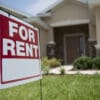The U.S. homeownership rate has cratered to its lowest depth since 1970, according to the U.S. Census Bureau.
The newly published 2020 Census data determined that 63.1% of the nation’s 126.8 million occupied housing units – or 80.1 million – were owner-occupied. This marked a 2% decline from the 2010 Census when the homeownership rate was 65.1%. On the rental housing side, 46.8 million units or 36.9% of the occupied housing units had rents as residents, a 14.8% increase from the 40.7 million recorded in the 2010 Census.
Only five states experienced an increase in their homeownership rate between 2010 and 2020: Hawaii (1.2%), (0.8%), Idaho (0.5%), South Carolina (0.4%) and Wyoming (0.1%). West Virginia and Maine had the highest homeownership rates in 2020 at 72.6% and 71.1%, respectively, while the District of Columbia had the nation’s lowest homeownership rate at 38.3%.
When measuring by racial demographics, Whites had the highest homeownership rate at 70.5%, followed by Asians (58.5%) and multiracial households (54.2%). During 2020, Native Hawaiian and Other Pacific Islander householders had the lowest homeownership rate among racial demographics at 39.6%.
During 2020, the homeowner vacancy rate — the proportion of the homeowner housing inventory that is vacant for sale — was 1.5%, down from the 2.4% rate in 2010. All but three states experienced a decline in their homeowner vacancy rates. In comparison, the national rental vacancy rate was 7.4%, down from 9.2% in 2010.












